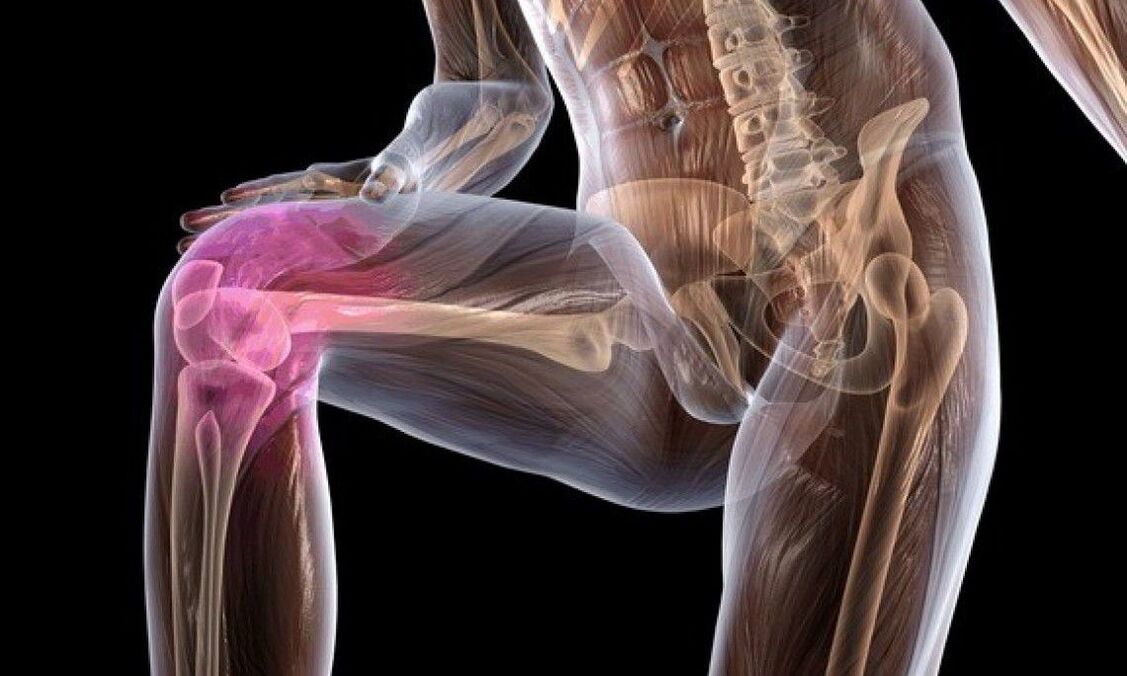
Osteoarthritisis a chronic non-inflammatory disease of the joints or articular cartilage, as well as the tissues surrounding them. Osteoarthritis is one of the most common diseases affecting 10-14% of the world's population. The disease mainly affects women aged 45-55 years. Osteoarthritis is the most common joint disease and accounts for almost 80% of all joint etiologies.
The etiology of this disease is currently unknown.. . . All the factors that lead to tissue degeneration and aging of the body can lead to the development of this disease, so with age, the appearance of osteoarthritis is almost inevitable.
There are external and internal factors at the onset of this disease.The main external factors of osteoarthritis include humidity, hypothermia, unfavorable working conditions, functional loading of joints with frequent microtraumas, as well as radiation energy and exposure to vibration. The main and fairly common cause of osteoarthritis is the inability of cartilage to withstand increased stress on the joints. Causes of this phenomenon can be impaired posture, long-term work, standing on their feet, and even some sports: lifting weights, running or jumping.
Internal factors that cause this disease include: hereditary predisposition to cartilage disease, impaired blood supply to the joints, hormonal imbalances and metabolic disorders. Osteoarthritis in women can be caused by ovarian dysfunction at menopause. In addition, with the early development of atherosclerosis, vascular processes may also be the cause of this disease.
Osteoarthritis also has a secondary development in diseases such as congenital dislocation, rheumatoid arthritis, intra-articular fractures and even alcoholism.
What are the symptoms and clinical signs of this disease?
The manifestation of osteoarthritis is characterized by severe pain and deformity of the joints, which leads to a violation of their function. With this disease, most of the load joints (hip and knee joints) and small joints of the hand are damaged. The spine is also involved in the process. However, most knee and hip joints are affected.
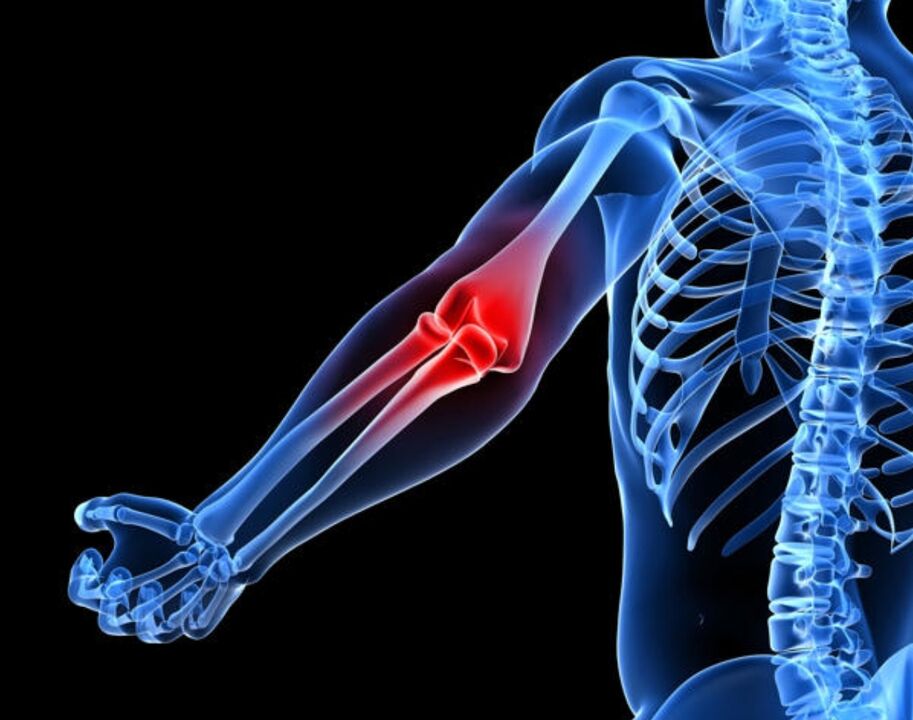
The main symptomWith osteoarthritis, there is severe pain in the area of the affected joints. These pains cause damage to bones, joints or periarticular tissues. Typically, this type of pain increases sharply and decreases at rest. Nocturnal pain, swelling of the joints, as well as the appearance of a feeling of "gel viscosity" in the affected joint in the morning - all this indicates the occurrence of osteoarthritis. The intensity of such pain depends on many factors (atmospheric pressure, humidity and temperature changes). All of these factors begin to affect the pressure in the joint space that causes these pains.
Another major symptom of osteoarthritis is the appearance of tingling or tingling in the joints, not only during walking, but also during any movement. The appearance of such a crisis or squeak is associated with disruption of the articular surfaces, which leads to limited mobility in this joint.
With osteoarthritis, there is an increase in the volume of the joints, which is the result of the appearance of edema of the periarticular tissues. Swelling or fever in the affected joint is extremely rare.
Clinical forms of osteoarthritis:
- Gonarthrosis.
- Coxarthrosis.
- Osteoarthritis of the distal interphalangeal joints of the hand.
- Osteoarthritis of the proximal interphalangeal joints of the hands.
- Deforming spondylosis.
- Intervertebral osteochondrosis.
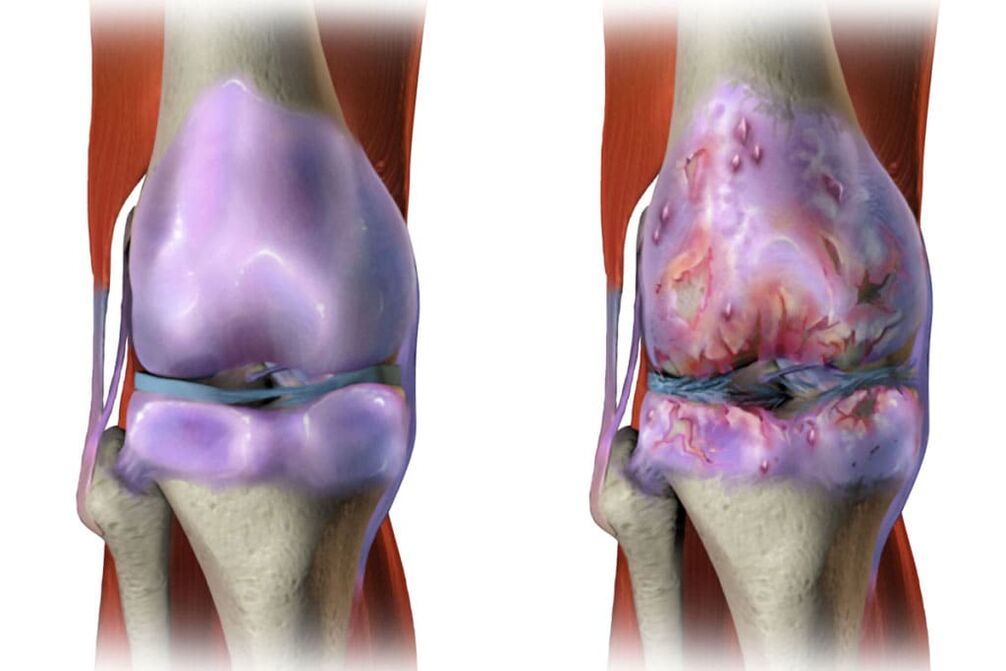
GonarthrosisOsteoarthritis is an injury to the knee joint. In this case, pain is expressed in the knee joints during walking, and they are especially intense when descending the stairs. The location of these pains is in the inner and front parts of the affected knee joint. Anxiety increases when the knee is bent. In addition, in many cases of gonarthrosis there is a deviation of the knee joint. The disease begins gradually and the pain increases. A crackle can be heard with active and passive movements. The pain begins to intensify and in many cases develops synovitis - an inflammation of the capsule membrane of the joint or tendon.
Coxarthrosis- This is a hip joint injury. The initial pain of a hip injury is not in the thigh, but in the knee, groin, or hip. They increase with walking and decrease with rest. These pains, which occur even with small changes on X-rays, are associated with muscle spasms. With the defeat of the hip joint, there is a gradual increase in limited mobility. This disease is the result of trauma or arthritis. With coxarthrosis there is a "duck" gait, developing lameness, hip and thigh muscle hypotrophy. There is also pain on palpation of the head of the femur.
Osteoarthritis of the distal interphalangeal joints of the hand or Heberden's nodes. . . The appearance of such nodules is most common in women during menopause. They first appear on the 1st and 3rd fingers of the hand. Over time, ie after several months or even years, a symmetrical lesion is observed in other distal interphalangeal joints. Such nodes are located on the dorsal-lateral surface of the joints.
Osteoarthritis of the proximal interphalangeal joints of the hands or Bouchard nodes.Unlike Heberden's knots, these knots appear on the lateral surface of the joint, resulting in lateral growth of the joint. As a result of this growth, the finger takes on a fusiform shape.
Deforming spondylosis- As a result of this disease, marginal bone growths appear in the vertebral region. The disease appears in 20 years. Osteophytes (bone growths) are similar to swelling - edema appears due to constriction of blood vessels. As a result, there is a stiffness of the spine, and in some cases, neurological disorders.
Intervertebral osteochondrosisoccurs in conjunction with curvature or deforming spondylosis of the spine. With this disease, the disc degenerates and the nucleus travels in different directions, causing damage to the spine. There is also an overgrowth of osteophytes and an increase in the surface of the joint. In this condition, the joint choroid suffers, resulting in vasculitis - an inflammation of the walls of small blood vessels. The pain syndrome is very pronounced and increases with physical exertion or hypothermia.
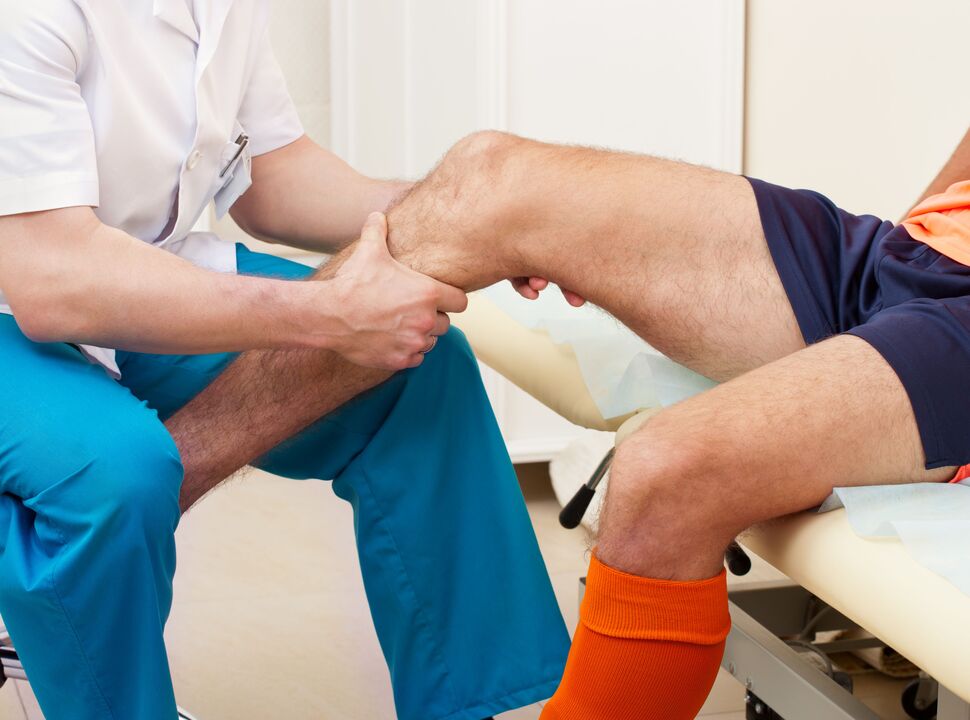
There are two main forms of osteoarthritis- primary or idiopathic (causes of the disease are not clarified) and secondary (the disease occurs against the background of other diseases).
Primary osteoarthritisIt is localized when less than 3 joints are affected. Local osteoarthritis affects the spine, joints of the hands and feet, knee joints, hip joints and other joints.
There is also generalized osteoarthritis when 3 or more joints are affected. In this case, large joints and distal interphalangeal joints are affected. In addition, generalized erosive osteoarthritis also occurs.
Secondary osteoarthritismay be posttraumatic. Also, the causes of secondary osteoarthritis may be metabolic diseases such as Gaucher disease, a genetic disease; Wilson's disease is a rare form of liver damage in which copper metabolism is impaired; Hemochromatosis, or as it is also called, bronze diabetes or pigmentary cirrhosis, is an inherited disease accompanied by impaired iron metabolism and accumulation in organs and tissues. Diseases such as diabetes mellitus, hypothyroidism - decreased thyroid function, acromegaly - hyperfunction of growth hormone can also cause osteoarthritis. In addition to these diseases, osteoarthritis can also lead to calcium deposition, neuropathy and many other diseases.
What happens with osteoarthritis?
This disease causes intensive aging of articular cartilage. As a result, articular cartilage loses its elasticity. In addition to the roughness of the articular surfaces, they still show cracks. In many cases, the cartilage wears out enough to be exposed. All this leads to a decrease in the elasticity of articular cartilage and damage to the joints. In addition, inflammation can be associated with all of the above changes, resulting in the growth of bone tissue, which leads to disease and deformity of the joints.
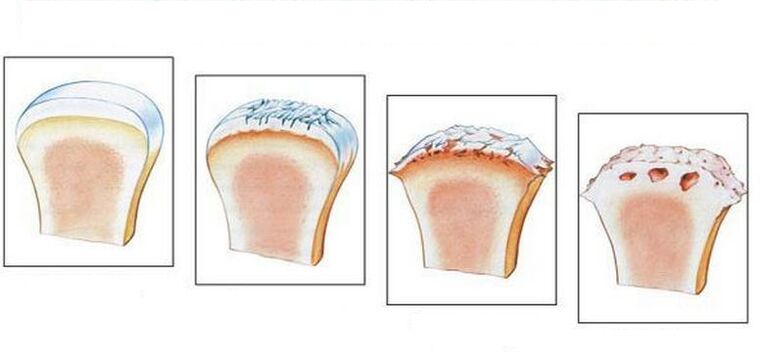
Diagnosis of osteoarthritis
In many cases, the diagnosis of osteoarthritis is not difficult. However, there are exceptions, for example, in patients with damage to the shoulder joint and signs of joint inflammation. Diagnosis of primary and secondary osteoarthritis, the occurrence of which is associated with metabolic or other diseases, may also be difficult. If there are clinical signs of osteoarthritis on X-ray, the symptoms of osteoarthritis are quickly detected (especially in the elderly). There is not enough X-ray and laboratory data to make a final diagnosis. To do this, a number of additional studies are needed to determine the exact cause of pain in the joints.
Treatment of osteoarthritis
There are both pharmacological and non-pharmacological methods to reduce or completely alleviate pain, including physical therapy and exercise therapy. Individual approach to each patient is required to determine the correct treatment. In this case, the individual characteristics of the patient and the characteristics of the course of the disease must be taken into account.
In the treatment of osteoarthritis, it is necessary to follow a regimen in the first place, because mechanical loosening of the joint is not only a key factor in reducing pain, but also plays an important role in the treatment of this disease. In this case, it is necessary to stay in a certain stable position for a long time, to walk for a long time and to stand on the legs for a long time, as well as to transfer weights that can cause mechanical loading of the joints. If the disease is neglected, the patient is advised to walk with an ax or a stick. During the exacerbation of the disease, some patients with severe pain are prescribed a half-bed regimen.
During the treatment of osteoarthritis, it is recommended to follow a diet to lose excess weight. This is especially true for those with knee injuries.
In addition, in the treatment of this disease, physiotherapeutic methods are used, which not only reduce pain and inflammation, but also have a positive effect on metabolic processes in the tissues of the joints and improve microcirculation. Physiotherapeutic treatments include the use of electric currents, alternating magnetic currents, electrophoresis, as well as ultraviolet radiation and phonophoresis of affected joints. In addition, thermal procedures, the use of peat mud and paraffin wax are prescribed.
Using the elements of therapeutic massage, patients should try to prevent mechanical irritation of the joint capsule. Only in this case, painful muscle spasms are reduced and the tone of weakened muscles increases, resulting in improved functional abilities of the patient.
Drug treatment is prescribed depending on the form and severity of the disease. In more severe cases, patients are prescribed surgery (arthroplasty).
Patients are also advised to seek beach spa treatment.
Prevention of osteoarthritisconsists of daily performance of special exercises that help strengthen the musculoskeletal system. Getting rid of excess weight, limiting the transport of weights, as well as the inclusion of foods such as jelly, jelly meat or aspic in the menu is the prevention of osteoarthritis. And, of course, to do sports such as swimming. It is important to remember that prevention is better than cure. The same goes for diseases such as osteoarthritis. In order not to think about how to get rid of severe pain in osteoarthritis, as well as how to treat this disease in the future, it is necessary to take preventive measures today without delay.
Treatment of deforming osteoarthritis by various methods
High specialization and accumulated experience in the use of shock wave therapy in many cases allows to achieve the maximum positive effect of treatment, even in the advanced stages of the disease, avoiding surgical treatment.
Shock wave therapy is performed on a modern device:
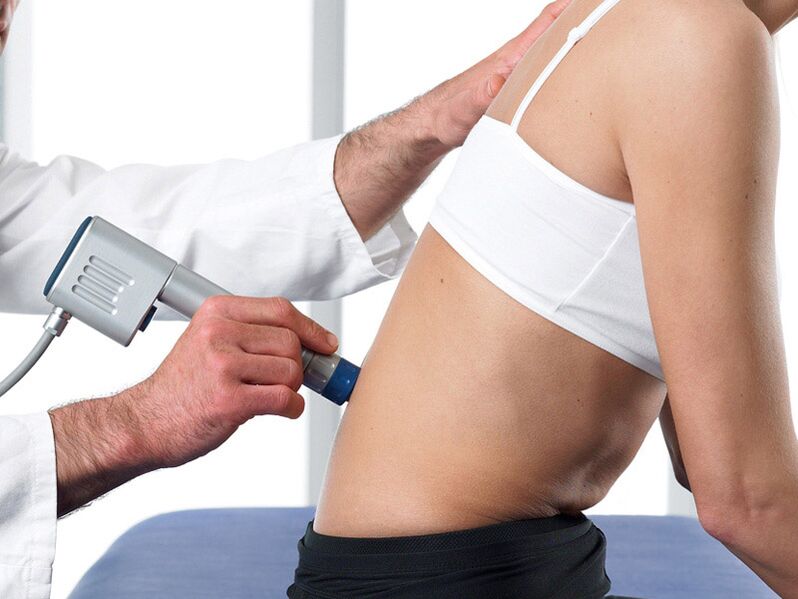
- arthritis, the course of treatment of osteoarthritis by UHT method consists of 5-7 sessions;
- The session is performed once every 5-7 days.
Under the influence of the shock wave, microcrystals of calcium salts and areas of fibrosis formed in the tissues of the joints are released in the affected tissues. At the same time, blood flow to the damaged tissue increases tenfold, which contributes to the resorption of calcium salts and areas of fibrosis.
Advantages of the SWT method:
- efficiency;
- good tolerance (does not require the use of anesthesia);
- reduces the need for other methods, especially surgery;
- rapid relief of pain without analgesics;
- ability to use in the chronic stage of the disease and its main manifestations;
- It is performed in an outpatient setting, does not require hospitalization, does not disrupt the patient's normal rhythm of life.
Photodynamic therapy in orthopedicsIt is a non-invasive, uncomplicated two-component treatment. The method uses a photosensitizer and laser radiation source approved for medical use with a wavelength of 660-670 nm.
Under the influence of a laser beam, a photosensitizer is excited by the release of singlet oxygen, which has a toxic effect on the energy complexes of the cell (mitochondria and Golgi complex), destroying the latter and thus triggering the process of irreversible apoptosis. At the same time, healthy cells are not damaged. Damaged pathological tissue is aseptically absorbed.
The photosensitizer is injected into the patient's body through a transcutaneous (application).
PRP plasma lifting- This orthopedic procedure is based on a patented method of processing the patient's blood using special vacuum biotechnological tubes and a special centrifuge mode.
During the procedure, an injection form of platelet-containing autoplasma is separated from the patient's blood, which is then injected into the soft tissues surrounding the joint and directly into the patient's joint cavity. Autoplasmic injections can reduce inflammation, relieve pain, and restore range of motion in the joint. The autoplasmic treatment procedure minimizes or eliminates the number of drugs used, thereby reducing the toxic effects of the drugs on the patient's body. Also, autoplasma injections help to reduce the duration of treatment by 2-3 times.
Instructions for the procedure (PRP plasmolifting):
- osteoarthritis;
- osteoarthritis;
- periarthritis;
- tendon tendopathies,
- damage to ligaments and muscles.
Thus, in orthopedics, shock wave therapy, photodynamic therapy, and plasma lifting (PRP) are the best options for the treatment of joint disease. Using modern equipment and technology and the experience of doctors, they allow you to achieve positive results.

















































